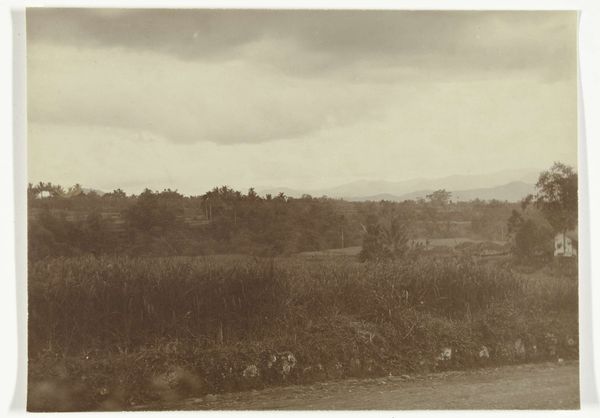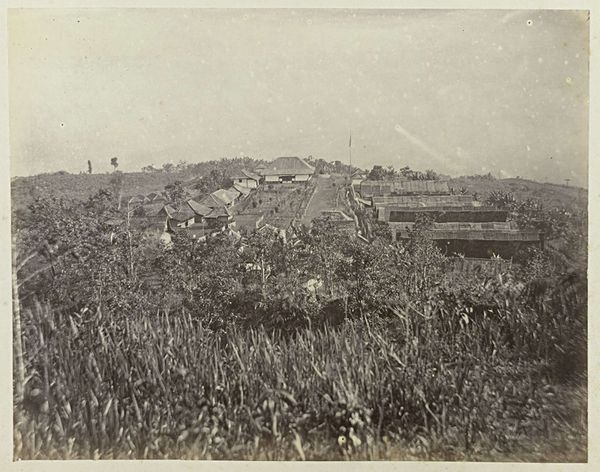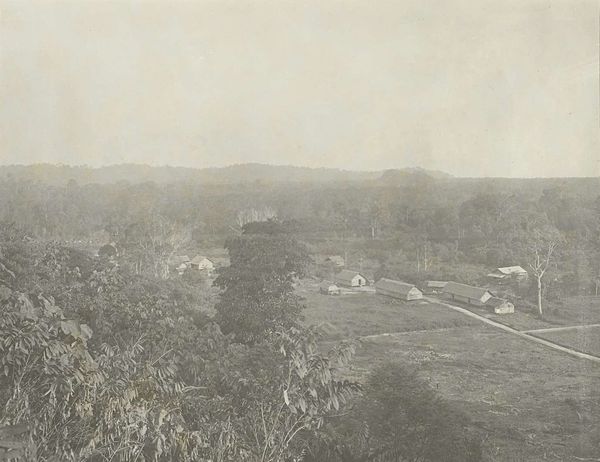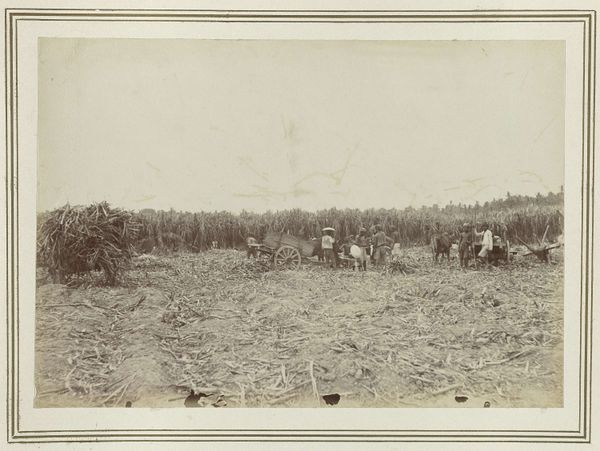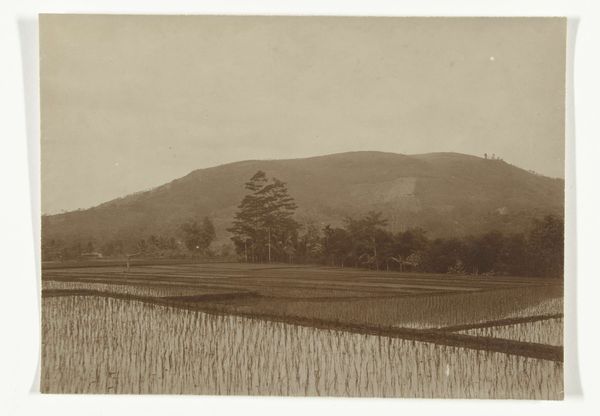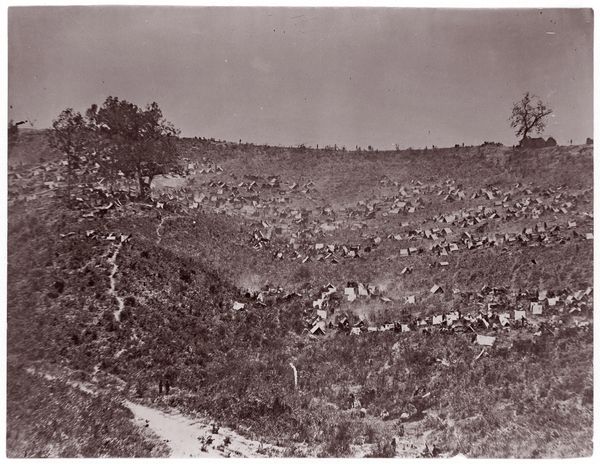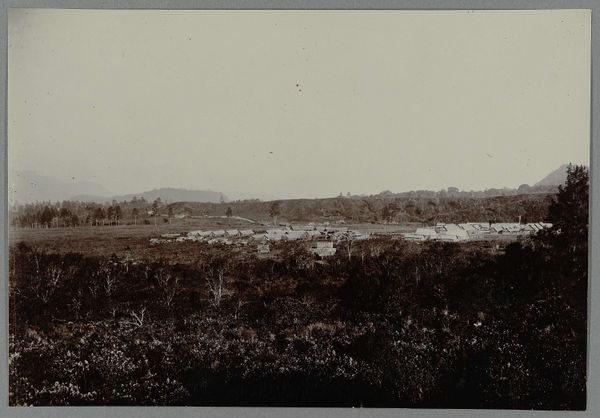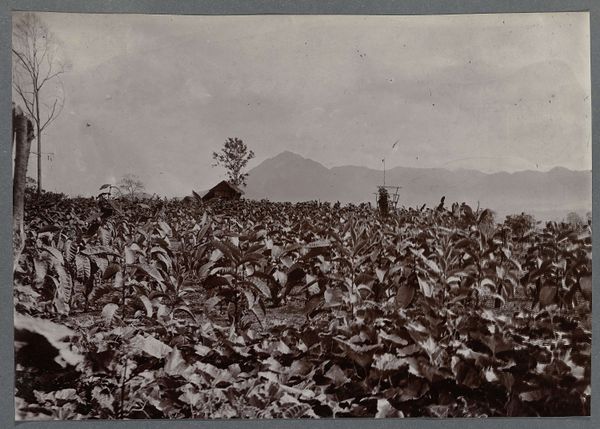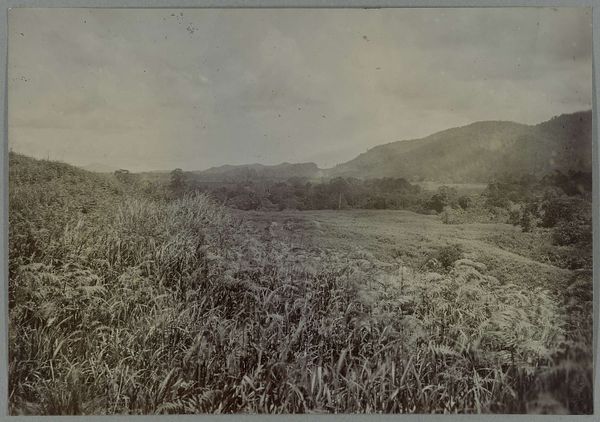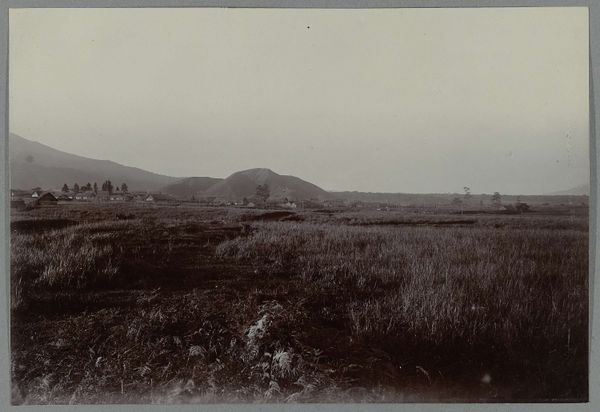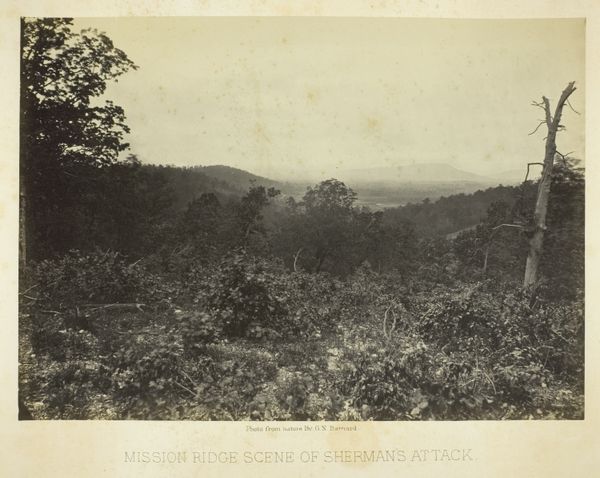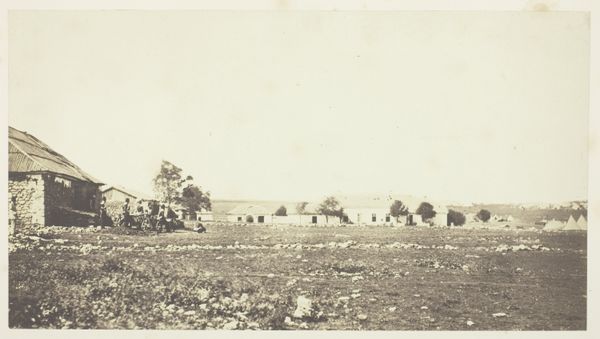
Dimensions: height 163 mm, width 221 mm
Copyright: Rijks Museum: Open Domain
Editor: We're looking at "Landschap met sawah, voormalig Nederlands-Indië," or "Landscape with rice fields, former Dutch East Indies," a gelatin silver print photograph from around 1890-1911, by Onnes Kurkdjian. It's such a tranquil scene, almost idyllic, but the sepia tones give it a weighty, historical feel. What strikes you most about this work? Curator: It immediately brings to mind the complex relationship between colonialism and representation. These types of images were often commissioned and circulated to promote a certain vision of the "exotic" East, one that justified colonial rule. It begs the question, whose perspective are we seeing here? Editor: So, even though it looks like a simple landscape, it’s loaded with that historical power dynamic? Curator: Exactly. The seemingly innocent depiction of rice paddies, carefully framed, served a specific purpose. Were these photographs presented back in the Netherlands to highlight the wealth and bounty of the colonies, and in so doing reinforced ideas of racial and cultural hierarchy? Editor: I hadn’t considered it in that light. I was focusing on the aesthetic quality, the composition. But you're right, the *intent* behind the image is key. Curator: Consider how photography, as a relatively new medium at the time, became a tool for cataloging and controlling the colonized world. Images like this could contribute to the broader narrative of "civilizing" a distant land. Editor: That makes me rethink the whole scene. It is carefully arranged for someone, and the likely recipient wasn’t from here. How did the circulation of imagery impact power relations in the Dutch East Indies? Curator: Think about how it shapes both European and Indonesian understanding, reinforcing the ‘us’ versus ‘them’ mentality, while justifying colonial exploitation. Editor: This really shows how a seemingly beautiful landscape can reveal uncomfortable truths about history. I'll never look at these types of photographs the same way again. Curator: Precisely. By examining art through the lens of history, we unearth layers of meaning often hidden on the surface, prompting critical dialogues on colonialism and cultural representation.
Comments
No comments
Be the first to comment and join the conversation on the ultimate creative platform.
